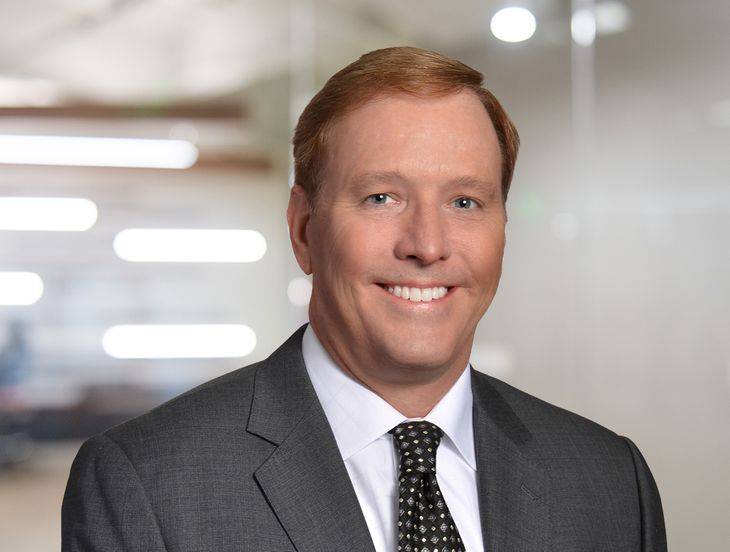A Decade In Review: Workplace Law In The 2010s
Insights
1.02.20
When the calendar turned to January 1, we not only saw the dawn of a new year but the beginning of a new decade. It’s natural, at such a turning point, to spend some time looking back on what has transpired in the past 10 years before turning our attention to the years to come. And we’ve done just that in the area we know best: labor and employment law.
We’ve assembled some of our firm’s thought leaders to spend some time recapping the most significant events in workplace law from the 2010s, while also forecasting where we might see things heading in the decade to come.
Table of Contents
- #MeToo Movement
- Equal Employment Opportunity Law
- Pay Equity
- Affirmative Action and Federal Contractor Compliance
- Labor Relations
- Wage and Hour
- Workplace Safety
- Joint Employment
- Immigration
- International Law
- Workplace Privacy
- California Law
- Employee Benefits
- Supreme Court
#MeToo Movement
Perhaps there was no bigger development in workplace law over the past decade than the emergence of the #MeToo movement, with a renewed focus on ridding the workplace of sexual harassment and incidents of sexual assault. Terri Stewart, a partner who moderated a panel on the subject at the 2019 Fisher Phillips Inside Counsel Conference, notes that while the phrase “me too” was actually coined in 2006 by a sexual assault survivor, it gained national prominence in 2017 following multiple accusations against high-profile celebrities.
“Without a doubt, the #MeToo movement has increased attention to the issue of workplace harassment,” Stewart said, “and has emboldened victims to come forward when perhaps in the past they would have remained hidden.” And this isn’t just anecdotal speculation—the numbers back up her point. Despite a 10% overall drop in the number of charges of employment discrimination, the Equal Employment Opportunity Commission (EEOC) reported earlier this year that sexual harassment charges filed with the agency jumped by nearly 14% from the previous year.
While most employers have spent the last few years upping their games to rid their workplaces of harassment, that doesn’t mean the problem has now been solved. “A recent study showed that 24% of women still say that harassment is on the rise,” says Stewart. “Meanwhile, 27% of men say that harassment is decreasing, which means there is still a disconnect out there.” Another unintended consequence of the #MeToo movement? An increase in the number of men who want to avoid working with women.
Lawmakers have given serious attention to the movement, and states and local jurisdictions around the country have taken steps to address the problem. The two biggest developments, according to Stewart: a number of states have banned confidentiality provisions in employment settlement agreements, and several prohibit mandatory arbitration in harassment cases.
“There have been over 200 bills proposed across the country relating to harassment in the past two years alone,” Stewart says. She says that at least 13 states have limited or prohibited nondisclosure agreements (NDAs) as condition of employment or part of settlement, 10 states have enacted preventive measures such as mandatory training and policy requirements, five states have extended harassment protections to non-employees, and four states have extended statutes of limitation in order to capture more claims. “All these new laws mean you can expect the #MeToo movement to thrive well into in the next decade,” she says.
Equal Employment Opportunity Law
Developments in workplace civil rights laws over the past decade were not restricted to sexual harassment, however. “We’ve seen a tremendous shift in EEO laws in the past 10 years,” says Randy Coffey, a Kansas City partner who served as Management Chair of the American Bar Association’s Equal Employment Opportunity Committee and currently serves as a Council Member for the ABA's Labor and Employment Law Section. “Perhaps the most significant development over the past decade has been the enormous expansion of state and local laws covering equal employment issues,” he says, citing pay equity, ban-the-box, workplace privacy, and a multitude of other topics. “Although it’s a terrible burden for employers attempting to comply with workplace laws and rules, especially those with multi-state operations, I think this trend will continue into the next decade.”
One trend that has swept the nation in the past decade has been the rapid development of workplace rights for LGBT employees. “This past decade has seen a sea change in this area,” says Coffey. We saw the first two federal appeals courts decide that Title VII’s sex discrimination provisions cover LGBT discrimination, and now the Supreme Court stands poised to rule on the issue. “But beyond this litigation, the steady march of LBGT employment rights in company policies, state legislation, and local ordinances, as well as in terms of public support, has been quite astonishing,” says Coffey. Even if the Supreme Court does not extend protection in this area, he predicts that Congress will have to deal with what almost certainly will be enormous pressure to somehow compromise and enact some degree of national statutory protection for LGBT employees.
A keen observer of the EEOC, Coffey paid close attention to the agency’s systemic discrimination investigations in the past decade. “I believe the EEOC will continue to investigate and pursue systemic investigations in appropriate cases in the coming decade,” he says, “but the cost of those cases in terms of monetary and personnel resources appears to have recently resulted in far more judicious assignment of cases for systemic investigations.” That trend likely will continue so long as the current EEOC Commissioners and General Counsel remain in place. “Likewise, as to criminal background investigations, some courts have explicitly rejected the EEOC’s hardline approach established under the previous administration,” notes Coffey. He believes that, so long as employers make individualized assessments of any prior criminal history, the risk of enforcement action on this basis has become fairly low.
Finally, after a decade under the amended Americans with Disabilities Act, Coffey notes that the statutory requirements and regulations have largely become settled. “That does not mean, however, that the ADAAA is not often difficult to apply.” He also notes that the EEOC is still intent on vigorously enforcing the statute related to what constitutes a disability, the interactive process, and what accommodations may be necessary, so employers will need to continue to grapple with this issue in 2020 and beyond.
Pay Equity
“Pay equity saw major developments in state legislatures, federal agencies, and in the courts over the past decade,” says Cheryl Pinarchick, co-chair of the firm’s Pay Equity Practice Group, “and I’d expect it to remain a hot area in workplace law in the next decade as well.”
At the local level, states have enacted more robust pay equity laws. “There were several common trends among these new laws,” says Pinarchick. She cites to statutes that expand the classes of employees covered beyond gender, and those that narrowed the legal justification of “any other factor other than sex” under equal pay laws to a “bona fide factor other than sex related to the specific position in question and consistent with business necessity” or similar language. “We also saw a bevy of states introduce protections permitting employees to discuss their own or other employees’ wages, and also prohibiting employers from seeking or relying on salary history when making compensation decisions,” she says.
But this first wave of new laws isn’t the end of it. “We are already seeing proposed legislation that would expand these relatively new laws,” says Pinarchick. Some would require employers to establish and disclose pay ranges for positions as well as the factors considered in establishing the ranges (as in Pennsylvania), and others would require mandatory reporting of employers of a certain size (as in Massachusetts). “Until there appears to be a meaningful reduction in the wage gap, we’re likely to continue to see states amending existing laws and passing new ones,” she says.
The action over the past decade wasn’t confined to the states. Federal agencies also got in on the act – in a big way. The EEOC made equal pay protections one of its top enforcement priorities in the 2010s. Of course, one of the biggest stories from the past decade was the revised scope of the EEO-1 Report to capture pay data, an effort that was temporarily scrapped by the Trump administration before being revived by a federal court. The current EEOC has signaled that it will blunt the impact of the pay data collection in the future, however, as it announced it would once again shelve the effort in 2020 and wasn’t sure if it would use the data already collected. “Instead,” says Pinarchick, “the agency recently announced plans to unveil a new pay data collection plan that would be less onerous, and we’ll be keeping our eyes open for that one.”
The other federal agency targeting equal pay was the Office of Federal Contract Compliance Programs (OFCCP), overseeing federal contractors. Like the EEOC, the OFCCP said, “Equal pay is a critical issue for workers and their families, and a priority of OFCCCP’s equal employment compliance assistance and compliance evaluation activities.” However, it already announced that it would not use any of the pay data gathered by the EEOC in this year’s expanded collection efforts for enforcement purposes. “Agency leaders said they don’t expect to find significant utility in the data given their limited resources and the aggregated nature of the information,” says Pinarchick.
Finally, the past decade saw a lot of pay equity action in the courts. “There has been a dramatic increase in litigation under federal and state laws,” says Pinarchick, “particularly as collective and class actions.” She notes that there have recently been some multi-million dollar settlements reported across the country, which means we aren’t close to seeing the end of the pay equity trend as we close out the decade.
Affirmative Action and Federal Contractor Compliance
Speaking of the OFCCP, when Cheryl Behymer, chair of the firm’s Affirmative Action and Federal Contractor Compliance Practice Group, looks back on the 2010s, she has one immediate reaction: “What a difference a decade makes!” The past 10 years have seen dramatic developments in the workplace laws covering federal contractors and subcontractors.
According to Behymer, several of the biggest changes include the Obama White House amending Executive Order 11246 to add “sexual orientation” and “gender identity” as categories expressly protected from discrimination by federal contractors, and adding paid federal sick leave requirements—even for part-time employees—to contractors covered by the Service Contract Act or Davis Bacon Act. Behymer also notes that the OFCCP added a pay transparency posting and notice requirement prohibiting contractors from preventing employees from discussing and sharing pay information. “By implementing these changes, the previous administration had quite a profound impact on federal contractor workplaces across the country,” she said.
The current administration might not have made changes quite as striking as these, but the federal contractor watchdog remains busy. “The OFCCP recently emphasized a new agency focus on transparency,” Behymer notes. “In fact, it added an ombudsman role to provide an avenue for contractors to work through any issues they may be having.” She also points out that the agency now offers early resolution procedure options to make life a little easier for contractors and aggrieved employees, while continuing to focus on compensation disparities—which has resulted in recent record monetary recoveries.
One big change that emerged in the past decade — but then fell away — were the so-called blacklisting requirements. A proposed rule would have required companies bidding for federal contract work to disclose administrative determinations, arbitral awards and decisions, and civil judgments issued against them. Those with serious, repeated, willful, or pervasive violations were put at risk of being denied federal contract work. Introduced in 2014 by the Obama administration, the rule was blocked by a federal court in 2016 before the effective date and then completely swept away by executive order in 2017. Might we see a reemergence of these rules in the next decade? “It all depends on the next few federal elections,” Behymer says, “so we’ll all keep a close eye on those.”
Labor Relations
When it comes to labor law and the National Labor Relations Board (NLRB), the firm’s Labor Relations Practice Group co-chair, Steve Bernstein, sums up the 2010s this way: “We’ve seen two different NLRBs over the past decade. The first seven or so years could not have been more different than the last three.” The pendulum swings were due, of course, to the results of the 2016 election.
The Obama-era NLRB had a mission to reverse not just several decisions from the Bush administration (such as the Purple Communications case that allowed workers to use their employers’ electronic systems for organizing purposes during non-working time, and the Banner Estrella Medical Center case that invalidated the practice of advising employees to maintain confidentiality over internal investigation matters), but also a few that were decades-old and well-established (such as the Piedmont Gardens case that had allowed employers to refrain from disclosing witness statements in response to union information requests). The early part of the decade also saw the NLRB blaze new trails when it issued Hispanics United of Buffalo, the first of many crucial decisions extending concerted activity protection to social media activity.
Bernstein notes that the later years of the Obama-era NLRB were not nearly as dramatic, “perhaps because the Board felt chastened by several Supreme Court decisions,” such as 2014’s Noel Canning case (where the Court invalidated scores of Board decisions due to improper use of recess appointment power). But the drama returned in December 2017 when the newly constituted Trump Board issued a raft of decisions overturning recent precedent, including PCC Structurals, Inc. (overturning a standard that had made it easier for unions to organize employee “micro-units”) and The Boeing Co. (implementing a more balanced analysis for evaluating workplace policies).
The Board has continued to level the playing field with significant decisions such as 2019’s Supershuttle DFW decision expanding the standard for independent contractor status and 2019’s UPMC case abolishing the “public space exception” that had allowed third-party access to employer property for protest purposes even in the presence of alternative means. It also has proposed rules clarifying the joint employer standard and various aspects of the representation process; a final rule revamping Obama-era “quickie elections” will soon be in effect.
So what does the future hold? “The NLRB should remain very energetic throughout 2020 in anticipation of the elections,” Bernstein says. “I would expect the Board to continue down the path of creating more certainty for employers that have been clamoring for labor relations clarity for purpose of engaging in strategic planning. Now that we have a Republican majority firmly established at the Board, unencumbered by red tape and procedural roadblocks, the sky’s the limit.”
Wage and Hour
Perhaps no area of workplace law experienced a more significant transformation over the past decade than wage and hour law. “Across the country, numerous state wage and hour laws have been enacted or amended over the past 10 years to greatly expand employee rights and protections,” says Kathie Caminiti, co-chair of the firm’s Wage and Hour Practice Group. “Not many people in 2010 would have predicted where we’ve ended up today, or where we’re likely headed tomorrow.”
First and foremost, Caminiti points to substantial increases in the state and local minimum wage, which are now commonplace in many states and cities throughout the country. In 2010, only a handful of states had minimum wage requirement above the federal rate of $7.25. “Today, thanks in part to the Fight for $15 movement that really kicked into gear in 2015, a majority of states have increased minimum wage rates,” she says. Starting in 2020, in fact, many states and local jurisdictions will see a minimum wage over $10 per hour.
Similarly, some states and cities have substantially increased the salary threshold for exempt employees during the last decade. Caminiti notes that the salary threshold for managers in some cites is almost $60,000 compared to the federal requirement of $23,660. And of course, one of the biggest wage and hour stories over the past decade has been the on-again, off-again “overtime rule,” which kicked in on January 1, 2020 after years of litigation and regulatory revisions to raise the federal minimum salary threshold over $35,000.
Over the past decade, employers have also been forced to grapple with an increasingly complex rubric of wage and hour laws with costly ramifications for non-compliance. In addition to minimum wage and overtime laws, many jurisdictions have enacted their own meal and rest break laws, daily overtime requirements, on-call obligations, and call-in pay laws. Taken together, Caminiti says, compliance is harder than ever, while the penalties for non-compliance are harsher than ever. “Many states, especially the more progressive ones like California, New York, and New Jersey, now have stringent laws aimed at punishing violations of the wage and hour laws,” says Caminiti. “And they include severe remedies such as double or triple damages, lengthy statutes of limitation up to six years, criminal penalties, and stringent anti-retaliation rules.”
Finally, the 2010s saw a marked proliferation of class and collective actions claiming violations of wage and hour laws. “High-stakes lawsuits have unfortunately become commonplace,” says Caminiti, “and the number of wage and hour lawsuits filed on a yearly basis has done nothing but increase during the last ten years. Claims alleging violations of state and local laws have substantially increased both the volume and financial exposure that the average company faces, and I don’t see this changing in the 2020s.”
Workplace Safety
“When I think about the two biggest developments at the Occupational Safety and Health Administration in the past decade,” says Travis Vance, co-chair of the firm’s Workplace Safety and Catastrophe Management Practice Group, “I think of the increased penalties for violations and the referral rules requiring immediate notification of severe workplace injuries.” His co-chair, Todd Logsdon chimes in: “And when I think about the two biggest general developments in the field of workplace safety in the 2010s, I immediately think about workplace violence and the impact of drugs in the workplace.”
Starting at OSHA, Vance recalls that 2016 saw the first increase in penalties for safety violations since 1990. The maximum penalties increased by 78%, with the top penalty for willful or repeated violations increasing from $70,000 to nearly $125,000. “The massive increases have led employers to change their calculus about whether to contest violation findings,” he says, “since there is so much more at stake now.” Meanwhile, Vance says, “OSHA changed forever on January 1, 2015, when it introduced new referral rules.” They require employers to contact OSHA within 24 hours following any incident leading to in-patient hospitalization, amputation, or loss of an eye. Employers must be especially diligent in this new era when it comes to understanding and complying with these obligations.
“I’m not sure we could have foreseen at the beginning of this decade the amount of attention we’ve had to spend fielding questions and handling issues relating to drugs in the workplace,” says Logsdon, describing another trend that has taken on added significance in the 2010s. He cites to both the proliferation of state cannabis laws that now permit workers across the country to legally ingest THC-laden products, leading to employer confusion regarding safety obligations, and the explosion of the opioid epidemic. “Employers now have to reconsider every aspect of their drug and alcohol policies to address the problem,” he says, “including their testing regimens, their counseling services, and their educational offerings to workers.”
And, of course, workplace violence has been a scourge in American workplaces throughout the past decade. “Although there still isn’t a federal regulation on violence, there seems to be gathering steam for some action from OSHA,” says Logsdon. He points to a movement in Congress to require healthcare facilities to address workplace violence which may become law in the next few years, and he believes this could spread further in the 2020s. “No one would be surprised if OSHA made small changes to their rules in the next decade that would have a dramatic and widescale impact in this area,” he says.
Finally, one other change from the past decade might be worth keeping an eye on in the next 10 years. “Although OSHA issued fairly stringent anti-retaliation rules in 2016 that, on paper, restrict an employer’s ability to mandate post-accident drug screening,” says Vance, “we haven’t seen aggressive enforcement of this rule from the Trump-era OSHA.” All that could change depending on the next occupant of the White House, he says, which means you’ll need to continue to closely monitor developments at OSHA into the next decade.
Joint Employment
Another area of the law that saw a drastic swing of the pendulum in the last decade was in the joint employment field. “The transition at the White House marked a definitive change in the way the joint employment question is viewed at the federal level,” says John Polson, a member of the firm’s Management Committee and chair of the Staffing and Contingent Workers Practice Group. “But we’re still in the midst of the transition, which should see rapid developments in the coming months.”
The most significant joint employment event in the past decade, according to Polson, was 2015’s Browning-Ferris decision, issued by the Obama-era NLRB. For the previous 30 years, the NLRB had held that two companies would only be considered joint employers if they shared or codetermined those matters governing the essential terms and conditions of employment. “But once Browning-Ferris became law, says Polson, “joint employment would exist even where one company simply has the right to exert indirect or potential control over the terms and conditions of another company’s employees. It was an absolute game-changer.” Other federal agencies took similar stances in the 2010s, as the Obama administration aimed to expand joint employer status to provide broader protections for employees it believed were subject to workplace exploitation.
But the tide started turning once the Trump administration installed leaders at the major federal labor and employment agencies. “In short order, they started undoing the prior administration’s handiwork,” says Polson. In late 2017, the NLRB overruled Browning-Ferris and reaffirmed the longstanding joint employment test, only to scrap that decision several months later due to conflict-of-interest allegations against one of the Board members. While the Board has not yet issued another decision to once again topple Browning-Ferris, it has issued proposed regulations that would fundamentally alter the joint employment standard and make it more difficult for businesses to be held legally responsible for alleged labor and employment law violations by staffing companies, franchisees, and other related organizations.
“Meanwhile, two other federal agencies have started down the path of clarifying the joint employment standard so that fewer businesses are caught up in workplace claims,” says Polson. He points to the 2019 proposal from the U.S. Department of Labor that would create a new standard for wage and hour liability, and a recent announcement from the EEOC letting us know that we can expect a new joint employment rule for civil rights claims in early 2020. “The clock is ticking before the 2020 elections,” says Polson, “and we’re sure to see dramatic developments in the coming months. In fact, I could see a scenario where the joint employment pendulum swings back even further than ever before, and we’re left with very narrow definitions of joint employer status at every relevant federal agency.”
Immigration
“Employers have survived yet another decade with no comprehensive immigration reform,” says Shanon Stevenson, co-chair of the firm’s Global Immigration Practice Group. “And there doesn’t appear to be any such reform in sight, either. No one would be surprised if we make it through the entire next decade without meaningful reform.”
Looking back on the past decade, Stevenson notes that the Obama administration tackled a variety of smaller accomplishments. From 2010 to 2016, it granted permission for H-4 spouses of H-1B work visa holders to apply for Employment Authorization Cards for the first time. “We also saw the administration take important steps towards protecting the estimated 700,000 DREAMERs in the workforce, suspending Social Security no-match letters issued to employers, and encouraging employers to voluntarily use E-Verify,” she says. Stevenson also notes that the previous administration focused its enforcement priorities on serious criminals and threats to national security – which resulted in record high deportation numbers.
Since 2017, however, the Trump administration has gone the other direction. It is currently taking steps to rescind Employment Authorization Cards for H-4 visa holders and revise Optional Practical Training for F-1 foreign students, while spearheading a challenge in the Supreme Court against DREAMERs. “Meanwhile, the current administration has resurrected Social Security no-match letters, and has renewed calls for mandatory E-Verify use,” says Stevenson.
Perhaps the two biggest immigration developments that have impacted employers in the past decade have been increased worksite enforcement and travel bans. “Enforcement activities in the form of I-9 audits and raids have increased by 400% in the past several years,” says Stevenson, pointing to a series of workplace raids that have taken place across the country. She also points to President Trump’s instituted travel bans against Muslim-majority countries, the last of which was upheld by the Supreme Court in 2018.
Those weren’t the only steps the current administration has taken, however. “The Department of Homeland Security instituted extreme vetting standards for all adjudications of work visas and employment-based permanent residence petitions,” says Stevenson. “This has quadrupled the denial rates for H-1B visas, contributing to a backlog of 2.3 million cases to the detriment of employers struggling to use legal immigration to meet their labor needs.” While the administration recently unveiled plans to streamline the H-1B process for 2020 and beyond, this doesn’t seem like it will be enough to break the logjam.
International Law
Our firm’s retrospective isn’t limited to our borders. William Wright, chair of the firm's International Employment Practice Group, has seen a trend in foreign countries over the past decade to change laws either to help attract employers or protect employees. “The struggle of how to encourage job growth while offering worker protection seems to be reflected in the diverse strategies around the world,” he says.
On the one hand, the 2010s saw a movement towards more employer-friendly legislation in Europe. Wright cites the United Kingdom as one country that made substantial workplace law reforms in favor of employers, extending the service requirement before unfair dismissal protections will vest. And under the Macron administration, France has made sweeping reforms that aim to give companies more hiring and firing flexibilities, more power to negotiate working conditions directly with employees, and less financial risk in cases of wrongful dismissals.
Meanwhile, Wright notes that other countries such as Japan, China, and Mexico made changes to provide more protection to employees in the past decade. “The theme is and will continue to be one reflecting the struggle to provide economic and other areas of protection for employees, but also to create environments that encourage hiring and expansion,” he says.
When it comes to specific trends to look forward to in the 2020s, Wright points to a general movement around the world to enact protections related to individual privacy and data. He also brings up that employers and governments around the world are struggling to pull back on generous pension and welfare benefit-related promises made years ago that have now become substantial economic burdens and hinderances to growth. Meanwhile, while employers in many countries around the world are “generally stunned” to learn that the U.S. defaults to an at-will employment system, we may see other countries move in this direction. “Evidence suggests that America recovers from recession faster because employers can hire and fire with demand,” Wright says, “while those in contract-based systems with strong employment protections suffer from cautious employers hesitating to hire because of laws and agreements that restrict reductions and terminations.”
Workplace Privacy
“Privacy laws and regulations have changed significantly in the last decade, slowly catching up to technology. We’ve seen material changes to employers’ ability to collect, use, and maintain personal information regarding their employees,” says Risa Boerner (CIPP/US), the chair of the firm’s Privacy and Cyber Practice Group. She recalls that it was once a largely unregulated area, but – in the last decade especially – employers have witnessed significant developments in the law relating to both workplace and out-of-office conduct.
Specifically, Boerner points out that numerous jurisdictions across the country have imposed significant restrictions on employers’ ability to collect certain information as part of background checks in the past decade. She also notes that off-duty conduct laws have been strengthened and implemented in jurisdictions across the country. A number of states have also imposed restrictions upon employers limiting their ability to require employees and job applicants to disclose information relating to their social media accounts.
“But when we’re talking about workplace privacy in the 2010s, without a doubt the most significant development was the 2018 implementation of the European Union’s General Data Protection Regulation,” says Boerner. The GDPR expanded individuals’ protection over the collection, use, and disclosure of personal information, and has inspired other countries to impose their own, similar, regulations.
Look no further than here in the United States. “In California, in fact, the California Consumer Protection Act was drafted with a potential sweeping application to data collected by employers,” she says. While some of the CCPA’s requirements were narrowed through a temporary measure that postpones the most onerous requirements for one year after its initial effective date of January 2020, the state legislature will soon decide whether to eliminate or extend employers’ obligations under the law. At least a dozen other states quickly introduced similar proposed legislation. Additionally, the past decade has seen new data breach notification requirements imposed throughout the country. All 50 states now mandate some type of notification requirement, and many states continue to expand and tighten existing laws.
Overall, notes Boerner, privacy laws are moving in the direction of enhancing individual rights and restricting the collection and use of personal information. “This is certain to continue in the next decade, and will undoubtedly impact workplaces across the country. Employers can no longer stick their heads in the sand when it comes to data security and workplace privacy.”
California Law
Speaking of California, many consider the state to be a linchpin in the national labor and employment law scene. Not only do many multistate operations have locations in the Golden State, but it often serves as an experimental laboratory where workplace initiatives are first rolled out before spreading across the country. The last decade saw California play a critical role in the national debate, and perhaps no one is better positioned to reflect on those developments than Ben Ebbink. Now a partner in the firm’s Sacramento office, Ben was Chief Consultant for the California State Assembly Committee on Labor and Employment for over 14 years, including most of the 2010s. In that role, he was the primary policy consultant for the state legislature on labor and employment matters, working to draft, develop, negotiate, and analyze all workplace legislation.
“Over the last decade,” Ebbink says, “California continued to lead the nation in pushing the envelope when it comes to labor and employment law and policy.” Reflecting on just some of the developments that started in California or its local jurisdictions in the 2010s and then spread across the nation, Ebbink cites issues such as sick leave, paid family leave, ban-the- box restrictions on the use of criminal history information in hiring, the use of salary history information, predictable scheduling, lactation accommodation, and LGTBQ workplace protections.
The past decade also witnessed legal developments that deepened the divide between California and federal law. According to Ebbink, California continued to range much further than the federal Fair Labor Standards Act (FLSA) when it comes to overtime compensation, flat-sum bonuses, de minimis pay, meal and rest periods, and other wage and hour matters.
“And of course, California ended the decade with a bang,” Ebbink says. The last two years saw a wholesale rewriting of the rules around classifying workers as independent contractors or employees, first through the landmark Dynamex decision by the California Supreme Court, and most recently through the codification of the ABC Test through AB5. “We’re already seeing other states line up to follow California’s example when it comes to misclassification legislation,” Ebbink says, “so don’t be surprised if we see them proliferate across the country in the coming decade.”
Employee Benefits
“By far, the biggest development in employee benefits law since 2010 is the enactment of the Affordable Care Act,” says Sheldon Blumling, chair of the firm’s Employee Benefits Practice Group. “Beyond all of the compliance obligations it created, we also had to monitor all of the related litigation, federal and state regulatory activity, and federal and state legislative activity that followed its passage.”
Blumling notes that many people predicted that the ACA would not survive the decade, and it certainly has been scaled back in some significant ways. However, all the key aspects of the ACA that impact employers–including the employer “play or pay” mandate, the various taxes, fees, and reporting requirements that impact employers, and the significant changes to the group health insurance market–have survived the decade and appear poised to continue indefinitely. “Even the individual play-or-pay mandate, which was essentially eliminated by the federal tax reform act, is making a comeback at the state level in various places throughout the country,” he says.
Another significant development in employee benefits law this past decade was the legalization of same-sex marriage. “Prior to the 2010s, employers were faced with a patchwork of different legal requirements related to making employee benefits available to employees’ same-sex partners, as different states addressed the issue in varying manners,” recalls Blumling. But when same-sex marriage was finally legalized at both the federal and state levels in 2015, both employers and employees were able to find some certainty and consistency in the scope of spousal employee benefits.
Besides those two significant developments, there are a few other themes in the employee benefits legal developments over the past decade. While the longtime transition of retirement benefits to an account-based / defined contribution model has continued over the past few decades, “we saw an acceleration of this transition with respect to health and welfare benefits in the 2010s,” says Blumling. “More and more employers switched to high deductible health plans and health savings accounts (HSAs) to combat skyrocketing healthcare costs.”
In addition, employers are continuing to push the envelope with wellness programs—in many cases, as a way to help combat skyrocketing healthcare costs. In response, federal and state regulators, as well as courts, are having to balance sometimes dueling policy and legal issues. “They are trying to walk the tightrope of allowing employers to incentive wellness activities and healthy lifestyles, while at the same time protecting the privacy and free choice of individuals,” says Blumling.
Last, but not least, the end of the decade has seen a significant uptick in new state laws attempting to regulate employee benefits. With ERISA preemption, historically, most employee benefits law was found at the federal, as opposed to state, level. “However, as the states continue to push state-run retirement plans and health insurance market reforms to fill in gaps left by the ACA,” says Blumling, “we expect the next decade will feature increased tensions between federal and state regulation of employee benefits, which will be sure to keep employers on their toes.”
Supreme Court
We’ll end our retrospective at the highest court in the land. The U.S. Supreme Court has been remarkably stable for the past decade – seven of the nine Justices have been on the bench since at least 2010 – and that has led to a predictable series of wins for employers for the past 10 years. “The three areas that have seen consistent employer victories at the Supreme Court in the 2010s are arbitration, wage and hour, and labor law,” says Rich Meneghello, who heads the firm’s Supreme Court Alert service and ensures publication of same-day summaries of all workplace law decisions.
The Court has issued no fewer than eight significant decisions since 2010 that have preserved employers’ power to enforce valid arbitration agreements. “The decade got off with a bang in 2011’s AT&T Mobility v. Concepcion case, which struck down a California law conflicting with the Federal Arbitration Act,” says Meneghello. “It ended in spectacular fashion with 2018’s Epic Systems trilogy, ruling that class action waivers in employment arbitration agreements are enforceable under the FAA.” In between were a string of other rulings upholding the popular alternative dispute resolution procedure, which have led most employers to establish some form of arbitration with their workforces.
When it comes to the Fair Labor Standards Act (FLSA), the Court pumped out at least four positive decisions helpful for employers. In 2012, the SCOTUS ruled that pharmaceutical sales reps were exempt from overtime pay under the “outside salesmen” exemption, and in 2018 ruled in a similar fashion when it comes to service advisors at auto dealerships. In 2014, it said that the time employees spend donning and doffing certain protective gear is not compensable, and neither was the time spent waiting for and participating in mandatory security screenings at the end of shifts.
And while there were a series of victories in the labor law arena all through the decade, “they were all leading up to the big one,” says Meneghello. In a 5-4 decision on the final day of the 2017-2018 term, the Court ruled in Janus v. AFSCME that the First Amendment prohibits public sector entities from collecting fees from non-union members. “The decision was not only a significant blow to public sector labor organizations across the country, which rely on these fair share fee arrangements as a significant source of revenue, but will continue to have an impact far beyond public employers and well into the next decade,” says Meneghello. By severely weakening the ability of public sector unions to raise funds, “our traditional labor practitioners believe this decision could be the beginning of the end when it comes to the sustained pressure felt by employers caused by union-sponsored legislation.”
Conclusion
You don’t have to wait until 2030 to stay up to speed on all of the developments sure to take place in the new decade. If you’re subscribed to Fisher Phillips’ alert system, you’ll receive the most up-to-date information as it occurs. If you have questions about any of the developments discussed in this summary, feel free to contact your Fisher Phillips attorney or any of the attorneys who contributed to our review.
Related People
-
- Cheryl L. Behymer
- Senior Counsel
-
- Steven M. Bernstein
- Regional Managing Partner and Labor Relations Group Co-Chair
-
- Sheldon J. Blumling
- Partner
-
- Kathleen McLeod Caminiti
- Partner and Co-Chair, Wage and Hour Practice Group
-
- J. Randall Coffey
- Partner
-
- Benjamin M. Ebbink
- Partner
-
- Todd B. Logsdon
- Partner
-
- Richard R. Meneghello
- Chief Content Officer
-
- Cheryl Pinarchick
- Senior Counsel
-
- John M. Polson
- Chairman & Managing Partner
-
- Shanon R. Stevenson
- Partner
-
- Terri R. Stewart
- Regional Managing Partner
-
- Travis W. Vance
- Regional Managing Partner
-
- William D. Wright
- Partner














